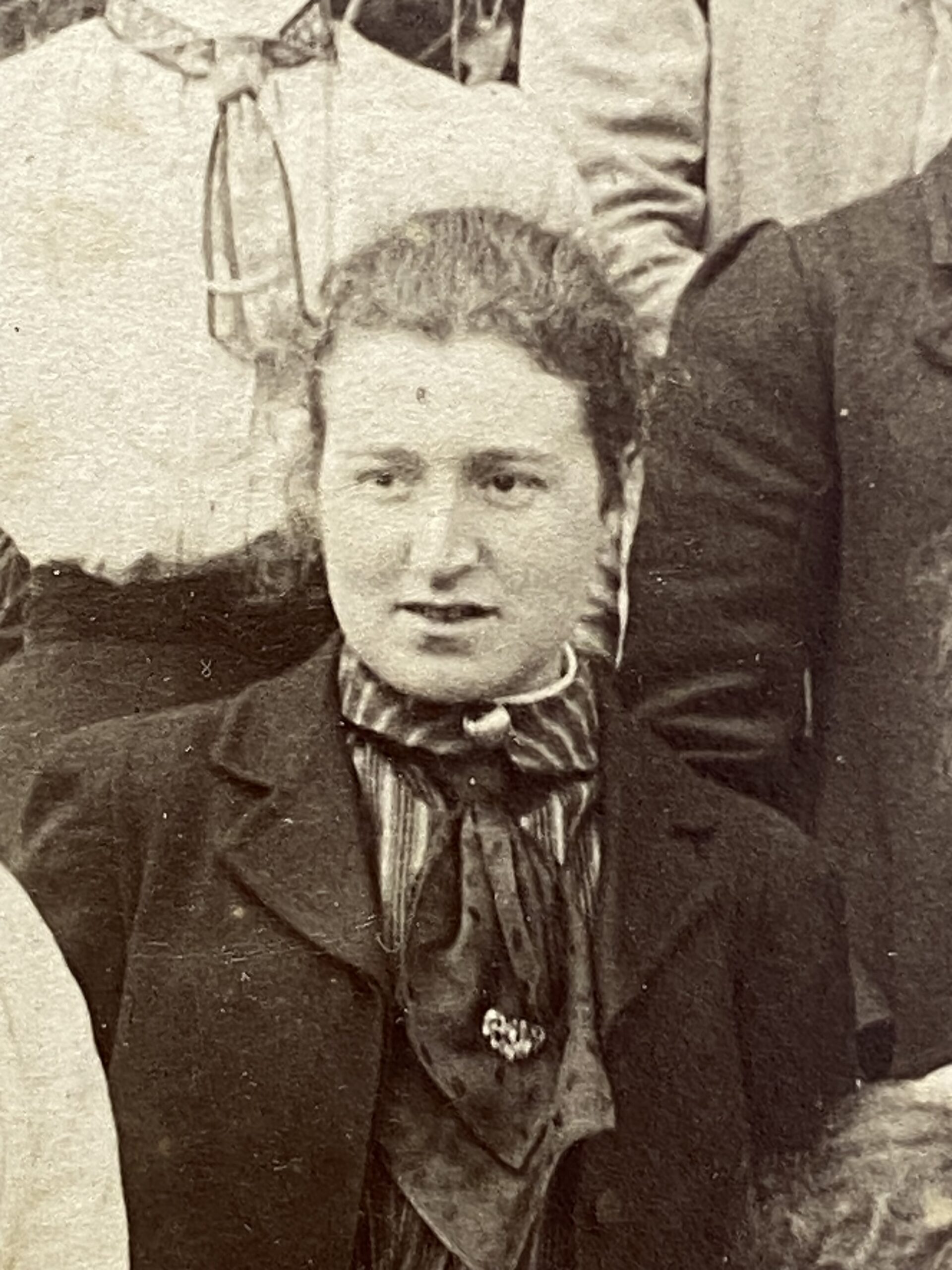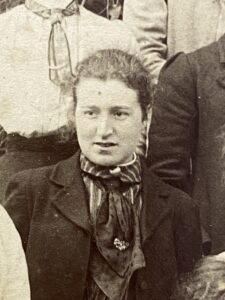

Pioneering botanist and Newnham Alumna Agnes Arber (NC 1899) has been remembered with a new PhD Prize in comparative biology at the University of Cambridge. Professor Sam Brockington, from Cambridge University Botanic Garden, said he hoped that the prize “will support the next generation of pioneering botanists, following in the footsteps of Agnes”. A blue plaque has been unveiled at her Huntingdon Road home, where she also had her ‘lab’ for many years following the closure of the Newnham owned Balfour Laboratory on Downing Street in 1927. Read the BBC News story.
Arber published her first book Herbals, their origin and evolution in 1912 and it has remained a seminal work. In 1946 she was elected a Fellow of the Royal Society, (the first woman botanist, and only third woman overall), and in 1948 she was the first woman to be awarded the Gold Medal of the Linnean Society of London for her contributions to botanical science. Her scientific research focused on the monocotyledon group of flowering plants. She also contributed to development of morphological studies in botany during the early part of the 20th century. Her later work concentrated on the topic of philosophy in botany, particularly on the nature of biological research.
2024 marks the 300th anniversary of the appointment of the first Professor of Botany at Cambridge. The current Professor of Botany, Professor Dame Ottoline Leyser (NC 1983), is also a Newnham alumna and gave one of the 150th anniversary lectures in February 2021.
The University’s rich legacy in botany is marked by pioneering achievements. Cambridge has made notable discoveries in the fields of plant genetics, physiology and diversity. Professor Richard Bradley (1724) was a pioneer in the research of plant reproduction, an understanding of which underpins breeding of modern crop varieties; Professor Sir David Baulcombe (2007) discovered entirely new mechanisms of gene regulation opening new approaches for defending crops against predators and making them resilient to climate change, and Professor Dame Ottoline Leyser (current) discovered the processes by which hormones regulate the basic structure of plants, which helps us design crops that are suited to our needs.
Biography
Agnes Robertson was born on 23 February 1879 in Primrose Hill, London. Her early education was influenced significantly by Ethel Sargant, a notable plant morphologist. Sargant’s mentorship profoundly impacted Arber’s research interests and methods. In 1897, Robertson began her studies at University College, London, earning her BSc in 1899. She subsequently won a scholarship to Newnham College, where she achieved a first-class degree in Natural Sciences in 1902.
After completing her degree at Cambridge, Robertson worked in Sargant’s private laboratory for a year, where she honed her skills in microtechniques for preparing plant specimens. In 1903, she published her first paper on the anatomy of Macrozamia heteromera in the Proceedings of the Cambridge Philosophical Society. She returned to University College, London as the Quain Studentship holder in Biology and was awarded a Doctorate of Science in 1905.
During her time at Newnham College, Robertson met Edward Alexander Newell Arber, a paleobotanist. They married on 5 August 1909, and she became known as Agnes Arber. The couple had one child Muriel and Edward Arber died unexpectedly in 1918, Agnes never remarried.
In 1909, Arber was granted space in the Balfour Laboratory for Women by Newnham College. At the time, women were not permitted to attend laboratory demonstrations and practical classes, making this an important provision for her research. She was awarded a Research Fellowship by Newnham College in 1912, which led to the publication of her first book, Herbals, their origin and evolution. This book is still considered a key text.
Arber’s research primarily focused on the anatomy and morphology of monocots, a group of plants she was introduced to by Sargant. By 1920, she had published two books and 94 other publications. Her significant works include Water Plants: A Study of Aquatic Angiosperms (1920) and The Monocotyledons (1925). After the closure of the Balfour Laboratory in 1927, Arber continued her research from a small laboratory in her home, as the Botany School at Cambridge did not provide her with space. One of her notable publications from this period is The Gramineae (1934), which analysed the life cycles, embryology, and reproductive and vegetative cycles of cereals, grasses, and bamboo.
In the 1940s, Arber transitioned from bench research to philosophical studies. Her most important philosophical work, The Natural Philosophy of Plant Form, was published in 1950.
Agnes Arber died on 22 March 1960 at the age of 81. She is buried in the churchyard of St Andrew’s, Girton. Her legacy continues through her contributions to plant morphology and her influential publications, which remain relevant in the field of botany.


